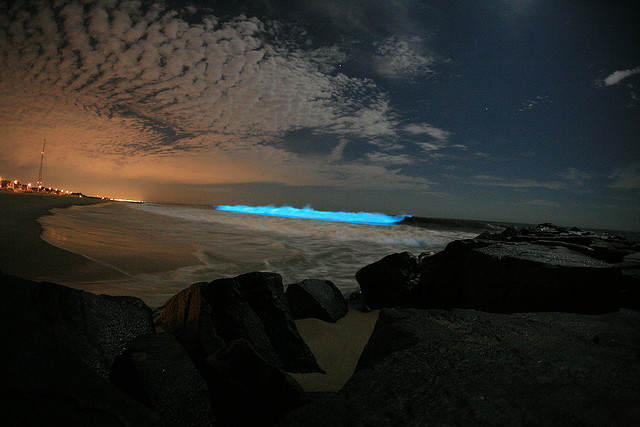
You can watch Kraft's nightlight project at YouTube. It's pretty simple to do at home. At it's most basic, all you need to do is purchase some bioluminescent dinoflagellates online, keep them alive in your home, and give them a good shaking occasionally to trigger the chemical reaction.
A couple more helpful links:
• Where Kraft bought his dinoflagellates
• A guide to other dinoflagellate dealers, and to the care and feeding of unicellular organisms
• Researchers at the Scripps Institution of Oceanography who are studying dinoflagellate bioluminescence to better understand how it works and what role it plays in the ecosystem
• A detailed explanation of what dinoflagellates are and why they glow

No comments:
Post a Comment